As a Chinese doctor, I have witnessed the remarkable resilience of Traditional Chinese Medicine (TCM) in addressing chronic health issues, particularly chronic hepatitis B (CHB).
This disease continues to pose a significant global health challenge, with millions affected and a pressing need for effective treatment strategies.
In this exclusive analysis for my esteemed readers, I aim to bridge the gap between TCM and modern antiviral therapies, drawing on the latest research to highlight the potential for combination treatments in achieving a functional cure for HBV.
The Current Landscape of Hepatitis B Treatment
Chronic hepatitis B remains a formidable foe in the realm of infectious diseases. Nucleos(t)ide analogues (NAs) have established themselves as the cornerstone of antiviral therapy, effectively suppressing HBV DNA and providing significant clinical benefits. However, these treatments come with notable limitations, including the risk of drug resistance, suboptimal antigen inhibition, and the necessity for lifelong management.
Recent studies underscore the urgent need for new strategies, particularly those that combine viral suppression with immune modulation. The integration of therapies such as pegylated interferon alongside NAs has shown promise in enhancing treatment efficacy and promoting more durable responses. Yet, the quest for a complete cure remains unfulfilled, emphasizing the necessity for innovative approaches.
TCM is vital complement to conventional therapies. A recent review in Chinese Medicine articulates TCM’s dual-action potential: it not only targets the HBV life cycle but also engages with the host's immune system.
Mechanisms of Action: A Deeper Dive
1. Direct Antiviral Effects: Certain herbal formulations in TCM have demonstrated the ability to inhibit HBV replication and assembly. Compounds derived from herbs like Huang Qin (Scutellaria baicalensis) and Ban Lan Gen (Isatis indigotica) are being studied for their potent antiviral properties, showcasing a potential to disrupt the viral life cycle effectively.
Ban Lan Gen, known as Isatis root, has gained recognition for its efficacy in controlling fever and viral infections. Used medicinally in China for nearly two millennia, it has recently gained prominence due to its remarkable ability to reduce pyrogen-induced fevers by targeting pathogens, including both viruses and bacteria. Modern pharmacological studies reveal additional functions of Ban Lan Gen, such as: Antibacterial and antiviral effects, Anti-Leptospira effects, Detoxification, Enhancement of immune functions, Elimination of leukemia cells.
Its bitter and cold nature allows it to clear heat-toxicity, cool blood, and relieve sore throat, making it versatile in treating various conditions related to infections, including hepatitis. It affects the Liver and Stomach meridians.
2. Indirect Immune Modulation: TCM also enhances the body’s innate immune responses. By promoting pathways involving apoptosis and autophagy, TCM can help eliminate infected hepatocytes and reduce oxidative stress, thereby facilitating a stronger immune defense against HBV.
A Synergistic Approach: TCM and NAs
The integration of TCM with modern antiviral therapies offers a promising avenue for treatment enhancement. The combination of TCM’s robust antigen inhibition capabilities with the targeted antiviral effects of NAs could lead to a synergistic regimen that not only suppresses the virus but also revitalizes the immune system. This alignment is critical in the context of the World Health Organization's ambitious goal of global HBV elimination by 2030.
Challenges Ahead
Despite the promising potential of TCM, several challenges must be addressed:
- Standardization and Quality Control: It is crucial to ensure that TCM formulations are tailored and prescribed by qualified practitioners and high-quality laboratories to guarantee efficacy and safety. I personally use 2 amazing Swiss labs that have outstanding quality and deliver worldwide.
- Integration in Healthcare Systems: Bridging the gap between TCM and modern medicine requires a more holistic approach to health, ensuring that patients receive the best possible care tailored to their needs and in their highest interest.
A Collaborative Future
The collaboration between disciplines is not merely beneficial; it is essential for advancing our understanding and improving patient outcomes. I invite my fellow scientists and healthcare professionals to explore the potential of integrative approaches in combating chronic hepatitis B. Together, we can redefine quality healthcare, ensuring a healthier future for those affected by HBV.
For ongoing insights and discussions about the latest in health and medicine, stay connected with me, Jasmine, at https://www.medicinacinese.ch and https://www.jascotee.com.
Let’s continue this journey toward outstanding personalised healthcare and healing!
References
Ge F, Yang Y, Bai Z, Si L, Wang X, Yu J, Xiao X, Liu Y, Ren Z. The role of Traditional Chinese medicine in anti-HBV: background, progress, and challenges. Chin Med. 2023 Dec 2;18(1):159. doi: 10.1186/s13020-023-00861-2. PMID: 38042824; PMCID: PMC10693092.
Wu D, Ning Q. Toward a Cure for Hepatitis B Virus Infection: Combination Therapy Involving Viral Suppression and Immune Modulation and Long-term Outcome. J Infect Dis. 2017 Nov 16;216(suppl_8):S771-S777. doi: 10.1093/infdis/jix355. PMID: 29156046.



